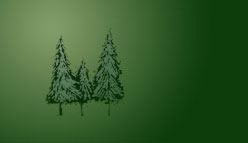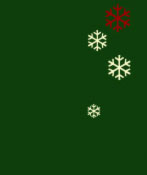Finding a piece of the cosmos may be as easy as logging
onto the Internet for amateur sleuths bent on aiding NASA’s Stardust mission.
Researchers at the University of California at Berkeley
are calling on computer users to join the Stardust @ Home project and help find tiny grains of interstellar dust captured
by NASA’s Stardust probe.
Launched in 1999, Stardust is expected to send a sample container laden with cometary fragments and interstellar
dust grains down to a Utah desert landing site in the early morning hours of Jan. 15. The comet and dust samples are locked
within a wispy material dubbed aerogel, which researchers will have to pore through to find the miniscule grains.
Scientists hope the comet and dust samples, ancient material
in its own right, will shed new light on composition of distant stars and the origin of our solar system 4.5 billion years
ago.
“These will be the very first contemporary interstellar
dust grains every brought back to Earth for study,” Andrew Westphal, the associate director of Berkeley’s Space
Sciences Laboratory, said in a statement. Westphal developed the technique that NASA will use to digitally scan Stardust’s
aerogel packs.
“Twenty or 30 years ago, we would have hired a small army of microscopists
who would have hunched over microscopes ... looking for the tracks of these dust grains,” he said.
For the Stardust mission, Westphal and his colleagues will rely instead on an online
“virtual microscope” that allows anyone with an Internet connection to sift through the anticipated 1.5 million
aerogel images for interstellar dust tracks. Each image will cover an area smaller than a single grain of salt, researchers
said.
Stardust @ home is reminiscent of the UC Berkeley-based
SETI @ Home effort and others that rely on volunteers to aid in a larger data analysis project.
But while SETI @ Home allowed computer users to participate in the search of extraterrestrial intelligent life by downloading a screensaver
that sifted through myriads of radio signals, the Stardust @ Home project — which is set to begin in mid-March —
is a bit more hands-on and comes with a bonus: Dust grain discoverers will get to name their tiny finds.
Volunteer scanners must pay close attention to aerogel images
to pick out dust tracks from false signals, and must first pass an initial test using sample pictures, project officials said.
“We will throw in some calibration images that allow
us to measure a volunteer’s efficiency,” Westphal said.
Westphal estimates that 30,000 man-hours will be required
to go through each image from Stardust’s aerogel sample return capsule four times.
According to the Stardust @ Home plan, if two out of four
volunteers claim to find a dust track, the corresponding image will be sent to 100 more volunteers for verification. Should
at least one-fifth of those reviewers affirm the find, the image will be kicked up to a team of Berkeley undergraduates trained
to spot aerogel dust tracks.
Researchers at NASA’s Johnson Space Center in Houston,
where Stardust’s sample return canister will be sent after landing, will remove the grains once they are identified
using specially developed microtweezers and micro-pickle forks, project officials said.
“Stardust is not only the first mission to return
samples from a comet, it is the first sample return mission from the galaxy,” Westphal said.
Click here for more information on Berkeley’s Stardust @ Home project.




